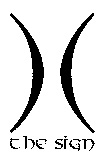TTABlog Special Report: Some Comments on Fraud after Hurley v. Volta
and
The TTAB's recent precedential ruling in Hurley Int'l LLC v. Volta,, Opposition No. 91158304 (January 23, 2007), has pushed the issue of fraud into the spotlight once again. Since its seminal ruling in Medinol Ltd. v. Neuro Vasx, Inc., 67 USPQ2d 1205 (TTAB 2003), the Board has consistently sustained a charge of fraud when an applicant or registrant falsely claimed use of its mark in connection with the goods or services identified. Last year’s precedential decision in Standard Knitting, Ltd. v. Toyota Jidosha Kabushiki Kaisha, 77 USPQ2d 1917 (TTAB 2006), invalidating three registrations on the ground of fraud, continued and reinforced the Board’s unrelenting approach. As Jonathan Moskin noted in a recent issue of the INTA Bulletin (Vol. 62, No. 4, February 15, 2007), the Board’s new rule “is not fraud in any traditional sense, but is rather a strict liability rule” for a false averment regarding use of a mark, irrespective of the actual, subjective intent or innocence of the applicant or registrant. But a footnote in Hurley invitingly suggests that, if corrected before the application's publication, a false statement regarding use is not fraud.

Hurley v. Volta – a Caution Sign. In Hurley, Paul and Joanne Volta, who together comprised the Australian musical duo called “The Sign,” filed a use-based application to register their mark in the design form shown above, for various entertainment related services. However, discovery revealed that the Voltas had not used the mark on some of the recited services at the time of filing their application. When Opposer Hurley (successfully) moved to amend its notice of opposition to add a claim of fraud, the Voltas filed a motion to amend their application to delete the Section 1(a) basis and to substitute a Section 44(e) basis, relying on their Australian registration for the mark.
Hurley argued that this case is analogous to Medinol, where fraud was found because registrant Neuro Vasx had never used its registered mark on one of two goods identified. Hurley further pointed out that Applicants reside in Australia, an English-speaking country, and that Joanne Volta apparently holds an Australian law degree. Given the “wealth of information” provided at the USPTO’s website, Hurley argued, the Voltas had no excuse for their false assertion.
The Voltas, of course, pleaded innocence. They claimed that they misunderstood the requirements of Section 1(a), and particularly the legal meaning of “use in commerce,” and that they “honestly believed that their ownership of the same mark in Australia and their use in commerce of such mark in Australia justified their Section 1(a) filing in the U.S.” They pointed to their website, referring to it as a “global domain.” They stressed that they have been “defending themselves and have no legal representation as such,” and claimed that they were distracted when Paul Volta “suffered a major coronary infarct.” And finally, the Voltas argued that this case is distinguishable from Medinol because they have yet to obtain a registration.

An Unsympathetic Board. The Board was totally unsympathetic to the Applicants’ plight and it agreed with Opposer Hurley that “this case is similar to the Medinol case.” The Board observed that here, as there, the application would have been refused but for “applicants’ misrepresentation regarding their use of the mark on all the recited services in the application.” And it is irrelevant that a registration has not yet issued:
"Applicants have provided no compelling argument why the law allows for cancellation of a registration after it is obtained through fraud, but does not allow for the prevention of a registration when fraud is revealed and the issuance of a registration is imminent."
The fact that Applicants allegedly misunderstood “a clear and unambiguous requirement for an application based on use, were not represented by legal counsel, and were suffering health problems” did not change the Board’s mind.
Applicants were “under an obligation to investigate thoroughly the validity of such a belief before signing their application under certain penalties.” Moreover, their “asserted misunderstanding regarding the meaning of ‘use in commerce’ was not reasonable.”
"At the time they filed their application, they knew they were seeking a registration for their mark in the United States. It was unreasonable for them to believe, however ‘honest’ such a belief, that the term ‘use in commerce’ on a trademark application in the United States meant anything other than use of the mark in commerce in or with the United States, or even that use in commerce in Australia was the legal equivalent of use in commerce in the United States."
And their assertion of innocence was irrelevant because “[p]roof of specific intent is not required.”
The Board therefore deemed the application void ab initio and entered summary judgment in Opposer’s favor.
As to the Voltas’ motion to amend their filing basis to Section 44(e), the Board observed that “the proposed amendment does not serve to cure a fraud that was committed.” Therefore, it deemed this motion “moot.” [The Board noted, however, that its decision would not preclude the Voltas from filing a new Section 44(e) application].
Universal Overall – a Ray of Hope. Despite the stringent approach taken by the Board in Hurley v. Volta, the decision fortunately does offer a ray of hope for Applicants and their counsel, at least if they act quickly to correct any false statements, made in good faith, regarding use: i.e., if they correct the misstatement prior to publication of the mark. In footnote 5 of its opinion, the Board offered the following dictum:
“We note, however, that a misstatement in an application as to the goods or services on which a mark has been used does not rise to the level of fraud where an applicant amends the application prior to publication. See Universal Overall Co. v. Stonecutter Mills Corp., 154 USPQ 104 (CCPA 1967).”
The Board’s citation of Universal Overall is an interesting one. There, the CCPA noted that the false statement was “made in good faith and not in an attempt to perpetrate a fraud on the Patent Office or on Opposer,” and that at the suggestion of the Examiner, Applicant Stonecutter amended its application to recite “textile fabrics” rather than the incorrect “clothing.” Unlike in Hurley, however, the CCPA did not address whether the false statement was “reasonable.” Is the Board suggesting in Hurley that the reasonableness of the false statement is irrelevant if corrected prior to publication? Or does an unreasonable false statement regarding use, made at any time, constitute fraud?
Universal Overall instead focused on the jurisdictional or procedural issue of whether Opposer had a legitimate claim of damage at the time of opposition. The court observed that Opposer’s claim of damage could not be predicated on the application as filed, but only on the (corrected) application as published. Because the published application no longer contained the false information, there was no basis for a damage claim.
Why the Publication Dividing Line? One could argue that a false statement of use may cause damage whether or not made in good faith and whether or not the misstatement is corrected prior to publication. It is true that, if the false statement is corrected at an early date, the PTO Examining Attorney will not rely on the false statement in passing the mark to publication, nor will anyone be misled when reviewing the published application in the Trademark Official Gazette. However, when one conducts a trademark search, one does not consider only published applications; unpublished applications are also taken into account. An unpublished application that includes a false statement regarding use surely may in some instances affect the decision as to whether to adopt a new mark; indeed a mark that seemingly has been put into use may cause more concern than a mark that is merely the subject of an intent-to-use application. Perhaps a false use claim has more impact when appearing in a published application, but it also may affect decisions before publication. So one may question whether the date of publication is a proper dividing line for a fraud finding.
Moreover, the Board’s suggestion that false statements corrected before publication do not constitute fraud seems to ignore that rationale of the Medinol decision. There, the Board stressed that the subjective intent of the registrant was irrelevant. The important point was that:
"Respondent filed its statement of use under penalty of “fine or imprisonment, or both, … and [knowing] that such willful false statements may jeopardize the validity of the application or any resulting registration….” Statements made with such degree of solemnity clearly are – or should be – investigated thoroughly prior to signature and submission to the USPTO."
Following the same reasoning, one could maintain that an applicant who makes a false and verified statement in an application – regardless of whether corrected before publication – has committed a fraud. So how does the leniency of the Universal Overall decision jibe with the strict liability approach of Medinol?

Is there a Fraudit in Your Future? In any case, in light of the Board’s statement in footnote 5 of the Hurley decision, Applicants and their counsel might be wise to “audit” all pending, unpublished, use-based applications to make sure that the involved marks have indeed been used on all the identified goods and services. One might call this undertaking a “fraudit.” The goal of the fraudit is, of course, to correct any misstatements regarding use before publication.
Rather than conduct a broad fraudit, one might review each particular application upon receipt of the PTO’s Notice of Publication. However, a given mark is currently published for opposition only a few weeks after the issuance of the Notice of Publication, so, as a practical matter, there may not be enough time to check the veracity of the claim of use of the mark and to make any appropriate correction to the application, before the mark is published.
Conclusion. The Board’s dictum in Hurley seems to offer practitioners and applicants a lifeline by which they can pull themselves free of the fraud quagmire. But it requires prompt and timely review of pending applications followed up by correction of misstatements regarding use. Clearly, the time for conducting a fraudit is now.
Text Copyright John L. Welch and Ann Lamport Hammitte 2007.




0 Comments:
Post a Comment
<< Home